What Happens When My Dog Gets Older
Other than the fact that it happens much sooner, the issues that effect senior citizen dogs are very similar to those that effect older humans. And, just as we do with humans, we may have to make some adaptations in the ways that our pets live to accommodate their age.
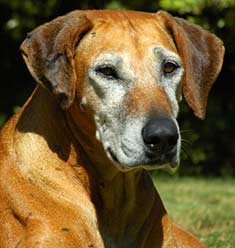
Age-related changes to a dog’s coat
One of the first changes you may notice as your dog begins to age is to his hair and coat. The muzzle hairs begin to gray in some dogs as young as five years old, which is roughly equivalent to middle age in humans. Just as we begin to see gray hairs around our temples, the dog will begin to show his silver as he enters middle age. The dog’s coat may begin to become dry and brittle, and his skin may become dry. As this happens, you may want to consider fatty acid supplements to bring back some of his former luster. Fish oils, known as omega-3 fatty acids and omega-6 fatty acids, may benefit your dog by relieving itchy skin.
Skin changes as the dog ages
The skin of older dogs often becomes thinner, which may make them more susceptible to cuts and scrapes. Generally, these can be treated with antibiotic ointments. Benign tumors of the skin may also form as the dog ages. Although these are not particularly pretty to look at, they do not cause the dog any harm or discomfort. They are rarely removed unless they ulcerate or break open. However, you should check your dog’s skin regularly as cancerous tumors may also occur. These malignant growths, known as mast cell tumors, most frequently occur on the back legs of dogs. The most common type grows very quickly and becomes ulcerated.
Older dogs may also develop calluses on their elbows, especially in larger breeds. This may be due to the fact that older dogs become less mobile and spend more time lying down. If they do this on hard surfaces, calluses will form to protect the skin and joint underneath. Prevention is fairly easy, as giving the dog a bed to lie on will mostly eliminate the problem.
The foot pads of dogs become thicker as they age, but this generally doesn’t cause any problems. Toenails may become more brittle, making them a bit tricky to cut. Nails may need to be clipped more often because they are less likely to naturally wear them down by playing and running around.
Metabolism in older dogs
As dogs begin to slow down, their metabolism changes. They require less food because of their slower metabolism as well as because of their lower level of activity. These two factors may reduce their food needs by as much as 30%. However, dogs who live in a home with younger dogs may try to keep up with the youngsters, thus maintaining their need for their usual amount of food.
An easy way to tell when you should cut down your dog’s food servings is to simply look at the shape of his body. From above, you should be able to see a definable waistline, but not obvious ribs and vertebrae. From the side, you should see the underside of your dog’s silhouette go up as the chest transitions to the belly, known as a belly tuck.
Guarding against obesity is just as important in dogs as it is in humans. As we age and put on weight, both humans and dogs are likely to suffer from diabetes, high blood pressure, and heart problems. To safeguard your dog’s heart health, it is important to carefully match his diet to his activity level and metabolism. In addition to reducing the amount of food you are giving him, you may also need to switch to a brand of dog food that contains less fat.
Your dog’s other nutritional needs may change as well. He may need more fiber to keep his bowels moving regularly. Inactivity can lead to constipation, as can pain that occurs in the back limbs due to problems such as hip dysplasia. Your vet may recommend dietary supplements to maintain or correct nutritional balance.
How age affects a dog’s joints
Arthritis is very common in older dogs, particularly in larger breeds. Previous joint injuries may also lead to arthritis. Some dogs will have only minor stiffness, while others will experience pain so bad as to have a hard time getting around. Your dog may need ramps, elevated feeders, or orthopedic beds to accommodate his movements. As his joints become damaged, he may need to be given chondroitin and glucosamine to improve the remaining cartilage and protect the joints.
It is important to keep your older dog as active as possible. With the normal aches and pains of older age, dogs naturally become less active. The lack of activity leads to loss of muscle tone, which in turn makes the dog even less active. To maintain healthy muscles, you may need to adapt your dog’s exercise routine. He may not be able to go for long runs or walks anymore, but he should be able to take shorter walks several times a day. If possible, take your dog for a swim, which provides low impact exercise that is easier on the joints.
Heart and lung function in older dogs
An older dog’s heart and lung function will begin to decline as well. The heart will not be able to pump as much blood, and the valves become hardened, causing leaks between the various chambers of the heart. These leaks cause the oxygenated and un-oxygenated blood to mix, meaning that the blood volume that the weakened heart is able to pump out to the body organs is not as richly oxygenated as a younger dog’s blood. The lungs are losing capacity at the same time, meaning that they are less able to fully oxygenate the blood as it passes through. All of these factors combine to make the dog less active, the very problem you are trying to combat! Regular exercise will delay these effects and keep your dog healthier for a longer time.
Housetraining regression as your dog ages
Older dogs may become incontinent. Just as humans may eventually need adult diapers, dogs may begin to have accidents in the house. In females, this is particularly common due to hormonal changes. If the dog is spayed, the problem is worse. Treatment generally involves hormone replacement.
On the flip side, some males may begin to have trouble urinating due to prostate enlargement. Although this is usually a benign condition, the risk of prostate disease can be reduced by neutering your dog if he will not be used for breeding.
Although it sounds as if your dog will slowly fall apart as he becomes older, keep in mind that you can do much to improve your dog’s quality of life long after he becomes a senior citizen. Providing adaptive equipment, good nutrition, and plenty of age-appropriate exercise will help your dog remain happy and healthy as he ages.
Doggies Den: Latest Articles
 Homemade Thanksgiving Treats for Your Dog
Homemade Thanksgiving Treats for Your Dog
NUTRITION We all want to include our dogs in our holiday celebrations, but hopefully, you're aware that sharing table scraps with your dog isn't always the best idea.
 Keeping Your Dog Safe during the Summer Months
Keeping Your Dog Safe during the Summer Months
HEALTH Summer is coming on fast, so it’s time to plan how you will keep your dog safe and healthy through the lazy, carefree, warm days.
 Vaccination Time Again-Keeping Your Puppy Healthy
Vaccination Time Again-Keeping Your Puppy Healthy
DOG HEALTH So you have your new puppy picked out. There are quite a few shots, treatments and examinations that will keep the newest member of your family healthy.
 Canine Thanksgiving Feast
Canine Thanksgiving Feast
NUTRITION With the wide variety of food at Thanksgiving dinner, chances are you'll want to give your dog something special, too. If you're contemplating what to feed your dog for the holiday, here is a guide to a great Canine Thanksgiving Feast.
 Dog Walking Tips Every Owner Should Know
Dog Walking Tips Every Owner Should Know
DOG FUN Walking your dog is not only crucial to keeping him healthy and happy, it strengthens the bond between your canine friend and his caregiver. There are a lot of obstacles out there. Don’t forget these simple tips to keep your walk fun and safe in the outside world.
 The Benefits of Physiotherapy for your Dog
The Benefits of Physiotherapy for your Dog
HEALTH The same techniques that physiotherapists use to treat a variety of injuries and conditions in humans have been adapted to suit animals with great success. Family pets, show dogs, and working dogs can all benefit greatly from physiotherapy. Dogs whose activities involve a lot of agility are especially susceptible to the types of problems that physiotherapy can address.
 The Decision- Adding a Dog to Your Family
The Decision- Adding a Dog to Your Family
FIRST TIME OWNERSBringing a dog into your family is a decision where many people don’t realize it’s magnitude until after they have the dog. There are a number of things that you need to research before you decide to purchase a dog, and it starts right in your own home.
 Bringing Your Dog Into Your New Baby's Life
Bringing Your Dog Into Your New Baby's Life
HEALTH Many believe that a dog and a new baby cannot happily coexist, so therefore the dog has to go. This is not necessarily the case.  A new baby does not mean you have to abandon your dog.

Doggies Den:
Most Popular Articles

Dog Pregnancy Symptoms
HEALTHIf you suspect your dog might be pregnant, check out part one in this series on pregnant dogs, where we cover pregnant dog symptoms.
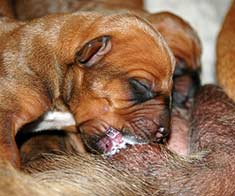
Dog Birth
HEALTHIn the third article of our dog pregnancy series, we look at the wonderful, but messy, process of bringing newborn puppies into the world.

Indoor Dog Potties
DOG PRODUCTSIt's been a long day at work. You were so busy, you didn't even take time to eat a sandwich, let alone run home to let your dog out. You're on your way home, knowing the poor dog is crossing his or her legs by now, when your car breaks down, delaying you even further. Can't somebody make this easier?
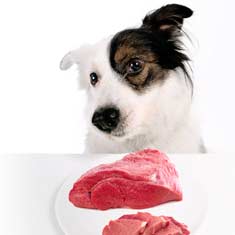
Your Dog’s Digestive System
PHYSIOLOGYEver wonder why your dog eats so fast? Or why he eats gross things? Or why he gets sick to his stomach? Or why his waste stinks so bad? Some of these things are normal, some are not.

Canine Respiratory System
BREATHINGThe basic function of your dog's respiratory system is to bring oxygen in to and remove carbon dioxide from the body. Knowing the symptoms of respiratory diseases can help you help your stay healthy.
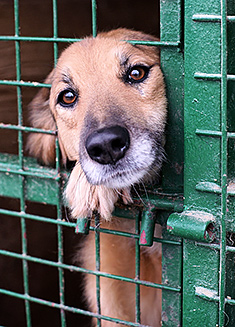
Shelter Dog Adoption Tips for Success
ADOPTION Are you intimidated by the prospect of "rescuing" a dog from a shelter? One reason that you may be wary of adopting a dog from a shelter is not knowing how to choose. Adopting a dog from a shelter can be a rewarding process, if you're prepared to do a reasonable amount of research.

Canine Urinary Tract Infections
SYMPTOMS AND TREATMENTDoes your dog seem to be having trouble relieving his or her bladder? Learn how to recognize the signs of urinary tract infections and how to treat them before they spread.

What to do for Dog Diarrhea
SYMPTOMS AND REMEDIESIf you have dogs in your house for any length of time, you have likely experienced at least one bout of dog diarrhea. Beyond the pain in the tuckus involved in cleaning up the mess, you should know what causes diarrhea, and when it's important to see the vet.
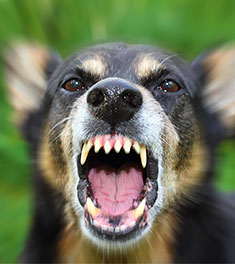
What to do for a Dog Bite
DOG BEHAVIOR Getting bitten by a dog can be scary, and you may be tempted to run around in circles for a while, trying to figure out what to do. Here's our guide to help you manage the situation.

Top Ten Tips for Living with a Senior Dog
DOG HEALTH Bringing home a new puppy is so exciting, but it doesn’t take all that long for your exuberant puppy to grow into a senior dog who may have special needs. Here are the doggies.com top ten tips for taking care of your companion who has been with you through so much.
